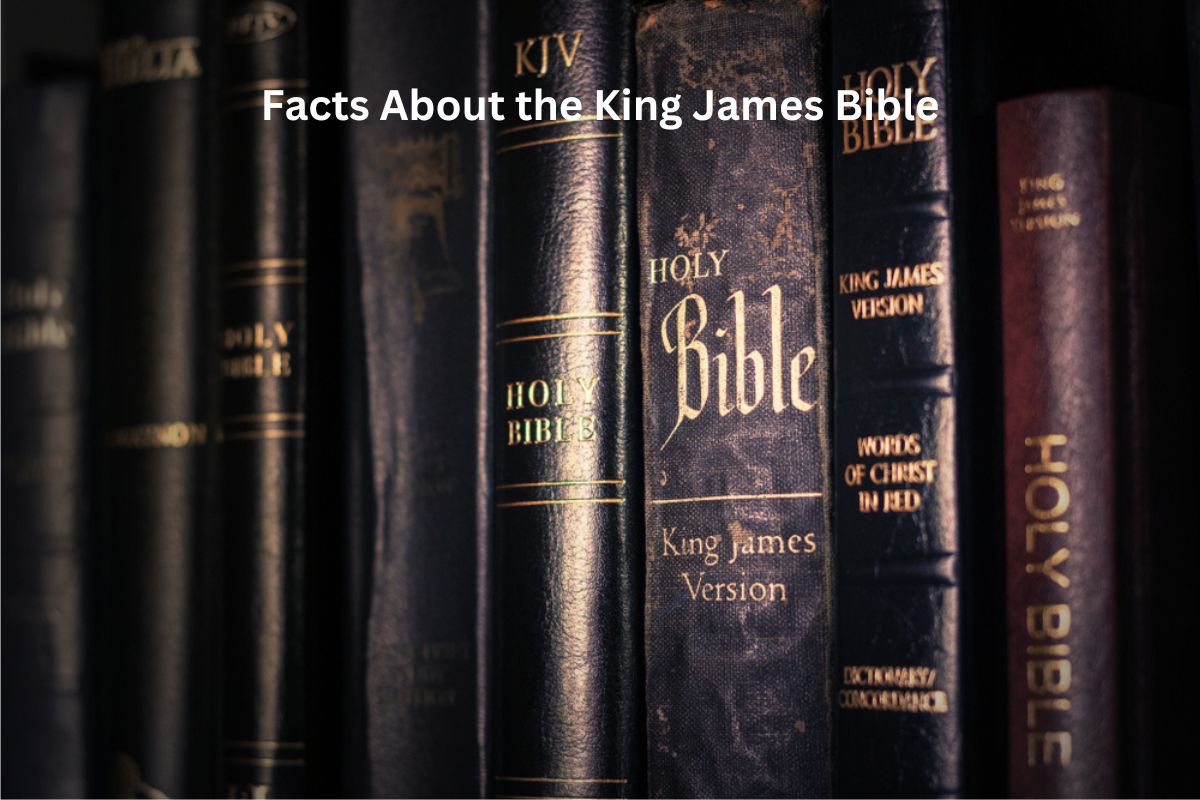The King James Bible, also known as the Authorized Version, is a seminal work of English literature and a foundational text of Christianity.
Published in 1611, it is renowned for its majestic language and has left an indelible mark on both religious tradition and English literature.
Comprising both the Old and New Testaments, it is a comprehensive Christian Bible, and its influence extends globally, shaping the way people think, speak, and worship across cultures and languages.
In this overview, we will delve into ten key facts that illuminate the significance and enduring legacy of the King James Bible.
King James Bible Facts
1. Published in 1611
The King James Bible, also known as the Authorized Version (AV), was published in 1611 during the reign of King James I of England.
Also Read: Facts About King James I
This translation project was initiated in 1604 when King James I convened a conference at Hampton Court to address issues within the Church of England and discuss the creation of a new English translation of the Bible.

2. Translated by 47 scholars
The King James Bible was the result of a collaborative effort by 47 scholars and theologians who were chosen to work on the translation.
Also Read: Timeline of the King James Bible
These scholars were divided into six groups, each tasked with translating a different portion of the Bible. They were chosen for their expertise in Greek, Hebrew, and Latin, which were the original languages of the biblical texts.
The translation process aimed to maintain linguistic accuracy while also ensuring readability and reverence.
3. Known for its majestic language
One of the defining characteristics of the King James Bible is its majestic and poetic language.
The translators consciously used a formal and archaic style of English, which included thee/thou pronouns and other linguistic elements that were common in the early 17th century but have since fallen out of everyday usage.
This language style has contributed to the enduring popularity of the King James Bible and has had a significant impact on English literature, shaping the development of the English language itself.
4. Influential in English literature
The King James Bible has had a profound influence on English literature, shaping the way English-speaking writers and poets approached language and narrative.
Many renowned authors, including John Milton, John Bunyan, and William Blake, drew inspiration from the language and themes of the King James Bible in their literary works.
Its impact extends to modern literature, with numerous contemporary writers and poets finding inspiration in its eloquent and timeless prose.
5. Includes Old and New Testaments
The King James Bible is a complete Christian Bible, containing both the Old Testament and the New Testament.
The Old Testament includes books such as Genesis, Exodus, Psalms, and Isaiah, while the New Testament includes the Gospels (Matthew, Mark, Luke, and John), the Acts of the Apostles, the Epistles, and the Book of Revelation.
This comprehensive compilation makes it a central religious text for Christians, as it encompasses the teachings, history, and prophecies of the faith.
6. Inspired by Shakespearean style
The translators of the King James Bible drew from the literary style of William Shakespeare, who was a contemporary of King James I.
This influence is evident in the poetic and eloquent language of the translation, which shares some similarities with the language used in Shakespeare’s plays and sonnets.
The incorporation of Shakespearean elements contributed to the beauty and richness of the King James Bible’s language, making it stand out as a work of both religious significance and literary artistry.

7. Highly regarded in Christianity
The King James Bible is highly regarded by many Christian denominations and is considered one of the most important and authoritative translations of the Bible in the English-speaking world.
It is particularly cherished by traditional and conservative Christian groups who appreciate its formal and reverent language.
The King James Version is often used in religious ceremonies, including church services and weddings, and it holds a central place in the religious practices of many Christian communities.
8. Undergone revisions over time
While the 1611 edition of the King James Bible is the original, the text has undergone revisions and updates over the centuries to modernize the language and address minor errors and inconsistencies.
The most notable of these revisions is the 1769 edition, often referred to as the “Oxford Standard Text,” which introduced changes in spelling and punctuation to make the text more accessible to contemporary readers.
These revisions aimed to preserve the essence and integrity of the original translation while making it more readable for modern audiences.
9. Different editions exist
There are various editions and printings of the King James Bible available, each with slight variations in wording and presentation.
Some editions include study notes, cross-references, and maps to aid readers in understanding the text and its historical context.
Different Christian denominations may prefer specific editions or variations of the King James Bible based on their theological preferences and traditions.
10. Globally influential in multiple languages.
The impact of the King James Bible extends far beyond the English-speaking world. It has been translated into numerous languages, making its message and influence global.
These translations have played a vital role in spreading Christianity and its teachings to diverse cultures and regions around the world.
The King James Bible’s literary and linguistic influence has also left a mark on many non-English works of literature and religious texts, further enhancing its global significance.
